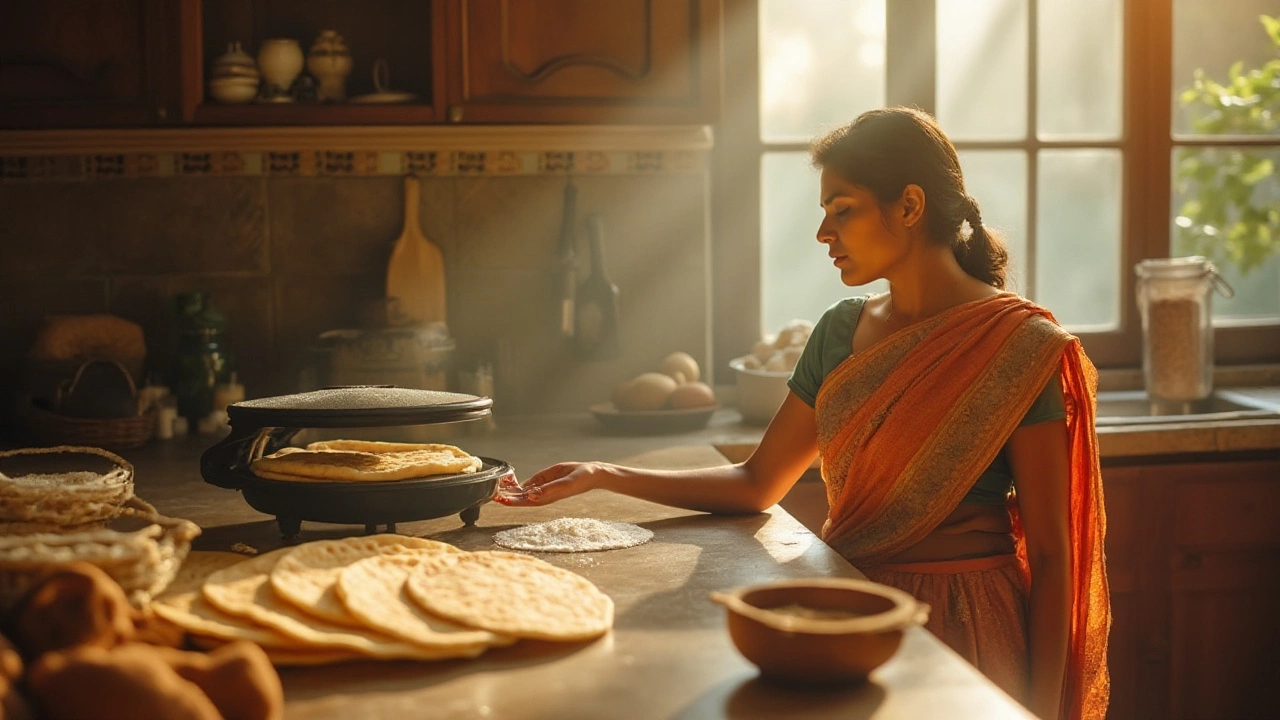Roti Maker Tips: Roll, Cook & Keep Soft Rotis Every Time
Ever wondered why some rotis turn out tough while others stay fluffy? It’s not magic – it’s about a few simple steps. Below you’ll find the exact tricks that home cooks use to make perfect rotis without the guesswork.
Choosing the Right Flour & Building the Perfect Dough
The base of a good roti is the flour. Atta (whole‑wheat flour) is the classic choice, but not all atta is created equal. Look for flour that feels slightly coarse and has a mild wheat scent. Too fine a grind can make the dough dense.
When you measure flour, spoon it into the cup and level it – don’t tap the cup. This prevents packing and keeps the flour‑to‑water ratio accurate. A good starting point is 2 cups of flour to about ¾ cup of warm water, but adjust by the feel of the dough.
Kneading is where the magic happens. Use your palm to push the dough away, fold it back, and repeat for 5‑7 minutes until it’s smooth and slightly elastic. If the dough feels sticky, sprinkle a tiny bit more flour; if it’s cracking, add a splash of water. Let the dough rest, covered with a damp cloth, for at least 20 minutes. Rest relaxes the gluten, making rolling easier and resulting in softer rotis.
Rolling and Cooking Secrets for Soft Rotis
Divide the rested dough into equal balls – about the size of a golf ball works for medium‑size rotis. Dust each ball lightly with flour, then roll it out on a clean surface. Aim for a disc about 6‑7 inch in diameter and as thin as possible without tearing. A thin roti cooks faster and stays soft.
Heat a tawa (flat skillet) over medium‑high heat. When a few drops of water sizzle on the surface, it’s ready. Place the roti on the tawa; you’ll hear a gentle puffing sound after 10‑12 seconds. Flip it, and you’ll see light brown spots. Now comes the secret: press gently with a clean cloth or a flat lid. This helps the roti puff up, trapping steam inside, which keeps it fluffy.
Cook the second side for another 10‑15 seconds, then give it a final quick flip to brown the third side. Remove the roti and immediately wrap it in a clean kitchen towel. The steam trapped inside finishes the cooking and prevents the roti from drying out.
Here are a few quick fixes for common roti problems:
- Tough rotis? They’re often over‑cooked or made with too much flour. Reduce cooking time and ensure the dough rested.
- Roti won’t puff? The tawa isn’t hot enough, or the dough is too dry. Raise the heat slightly and add a pinch of extra water to the dough.
- Roti sticks to the pan? Lightly dust the roti with flour before placing it on the tawa, and make sure the surface isn’t wet.
Storing rotis is easy. Keep them in a covered container or a cloth‑wrapped basket. When you reheat, sprinkle a few drops of water on the surface and warm on a low‑heat skillet – the rotis will come back as soft as fresh.
With these roti maker tips, you’ll move from chewy to cloud‑like in just a few tries. Grab your tawa, follow the steps, and enjoy warm, soft rotis with any Indian dish. Happy cooking!
Why Your Roti Turns Hard in a Roti Maker: Tips for Soft and Fluffy Results
Making roti in a roti maker can sometimes lead to unexpectedly hard results. Discover the common reasons why roti becomes hard and learn tips to keep them soft and fluffy. From adjusting dough consistency to perfecting cooking techniques, this guide offers practical solutions that can help you improve your roti-making skills.
